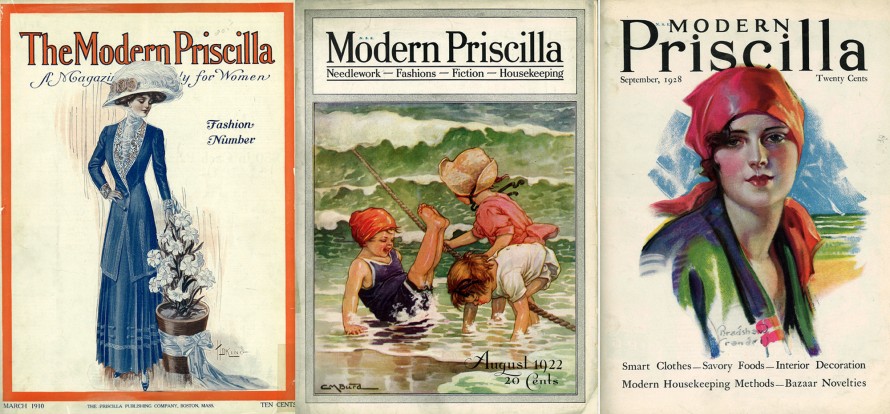No one can resist flipping through the pages of a magazine—in waiting rooms, while traveling, or anywhere. One that I love to browse through, and one that is popular among our library’s users, is the “women’s magazine,” Modern Priscilla (1887-1930). Originally focused on dress patterns, china painting, and needlework, the magazine’s scope was subsequently enlarged to cover other aspects of women’s home life. Modern Priscilla documents the home economics movement of the late 19th and early 20th century that encouraged women to think of homemaking as a profession vital to humanity’s continued progress.
Our Library attracts a variety of researchers interested in our extensive historical and international periodicals collection. Visitors come looking for inspiration or information from the articles, illustrations, photographs, and advertising in these publications, which are often the only sources for original material about a certain object, style, or designer. We have a large collection of “shelter magazines,” which are periodicals with a focus on interior design, architecture, and gardening. Our serials date from the late 18th century through the latest issues of many current titles devoted to decorative and applied arts, textiles, glass, ceramics, graphic design, and antiques.

Covers of issues of Fortune magazine from 1943 [Chicago, etc., Time, Inc., etc.] (1930 – ) Smithsonian Libraries. q HF5001 .F7X CHM NWKRU
The Library collectsFortune Magazine for its graphic design content. Fortune was created as part of the Time, Inc. publishing empire in 1930, with the premise that business was the common interest among leading citizens of the United States. Fortune’s editorial innovation was an in-depth feature article that examined a single company in order to create public awareness of that company’s corporate practices and activities, good and bad. From the start, Fortune was known for the quality of its artistic, advertising, and editorial content. Much of its success was attributed to its beautiful covers, unusual for a magazine concerned with business and social issues. Original artwork commissioned from prominent artists created some of the most innovative magazine covers of the times. Fortune artists illustrated the growth of twentieth century industrialization with streamlined, modern graphic styles and layouts, as well as more traditional subjects with conventional illustration styles.

Today is Magazine Day.
